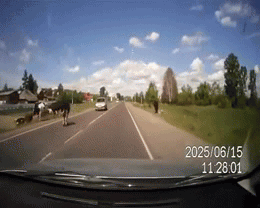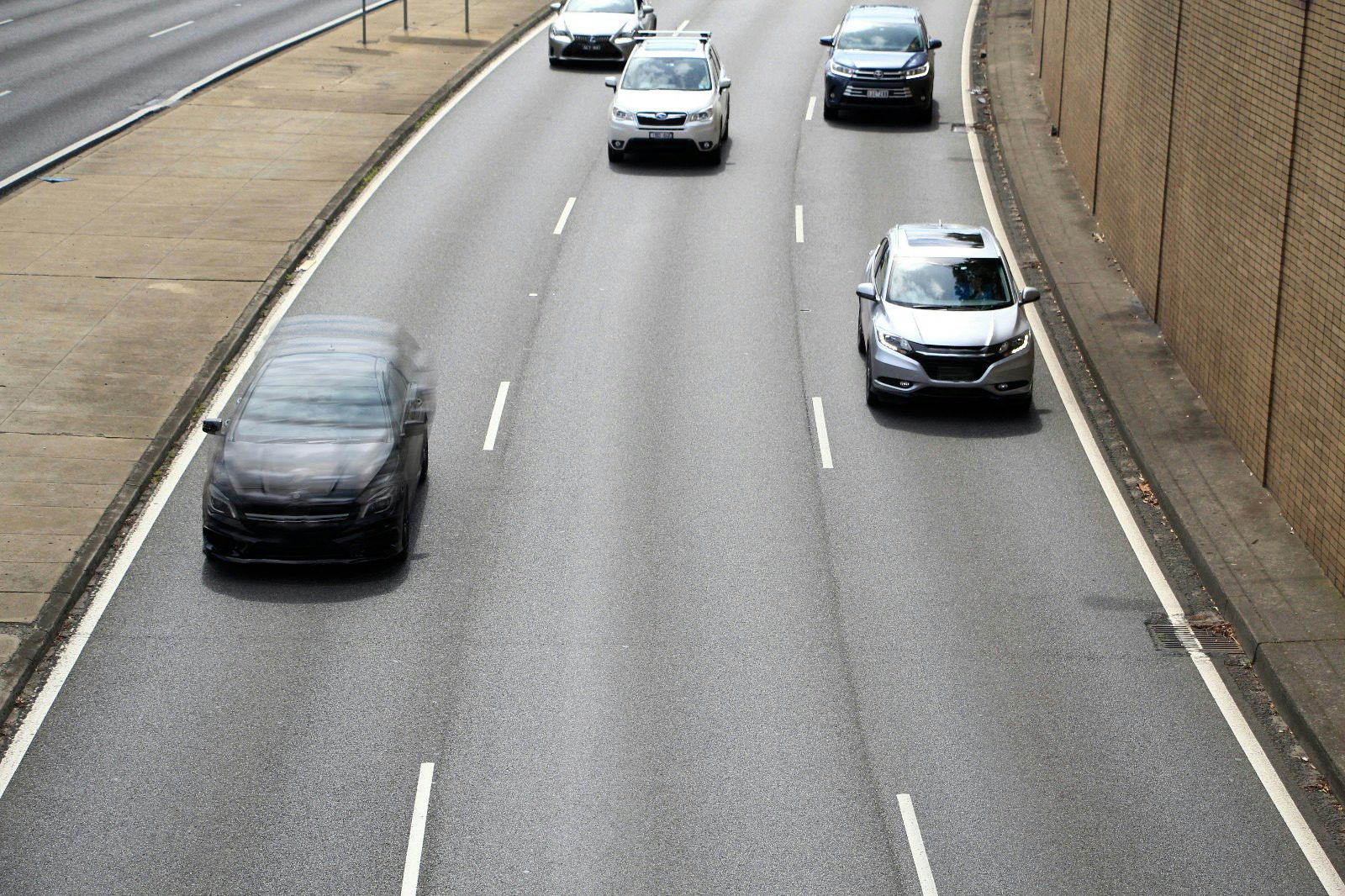
Speeding refers to exceeding the speed limit or driving too fast for the driving conditions, which means that in bad road conditions you may be speeding even if you are driving below the posted speed limit.
Speeding is dangerous because you (and others) have less time to react and the vehicle is harder to control. As a result, injuries are more severe and involved persons are more likely to die.
Near people, parked cars and shops
Slow down and stay alert to potential hazards when nearing a busy parking area or shopping street. Parked cars can pull out, and pedestrians can step out from between parked cars. Drive with care in all parking lots, and especially those with an obstructed view around corners.
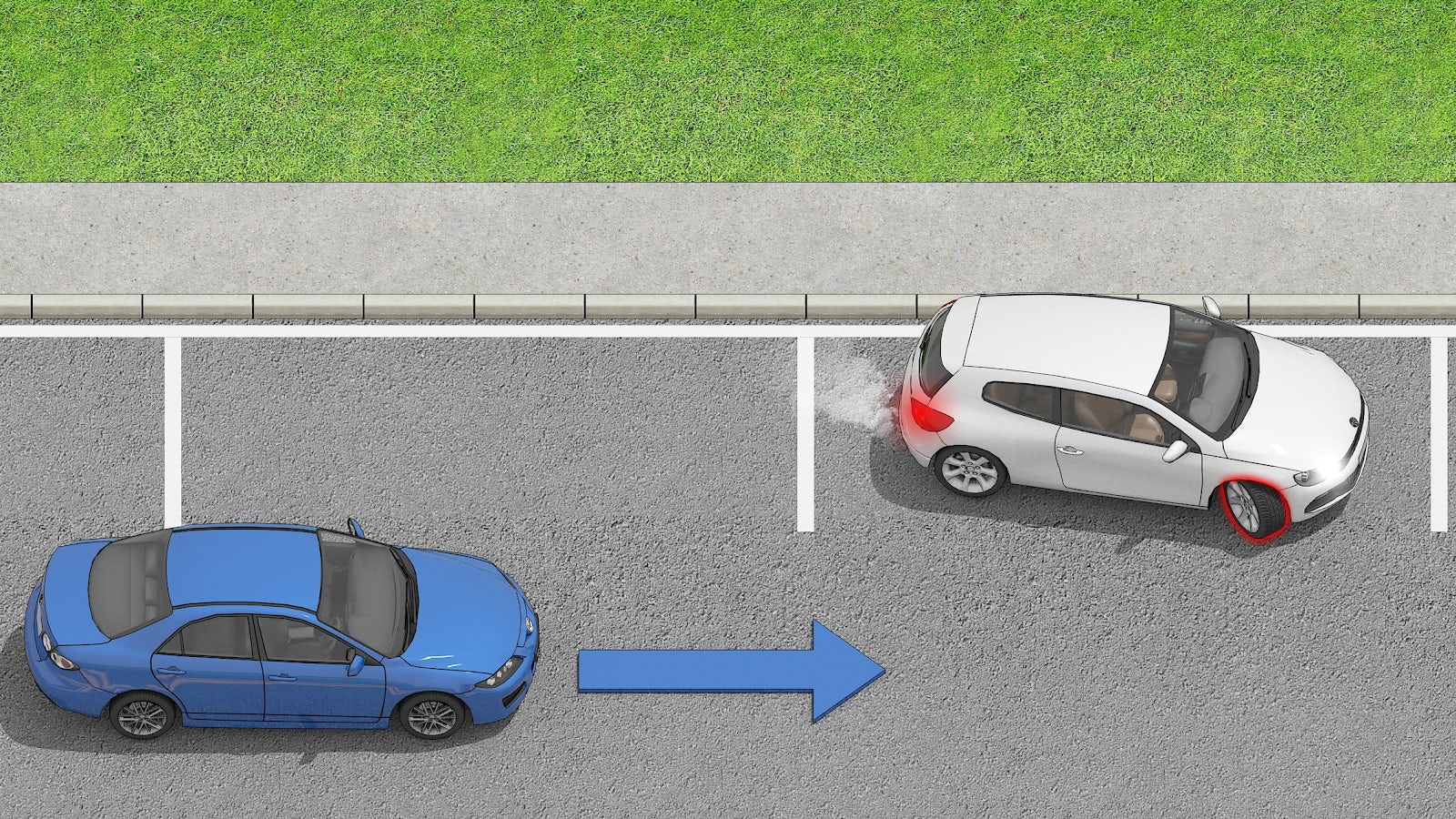
Slow down in bad conditions (road, weather or light)
It's your responsibility to decide on a safe speed based on the conditions. You are never allowed to go faster than the speed limit, but you may drive slower.
Weather affects your driving

Bright sunlight (e.g. at dawn or dusk) can make it difficult to see the road ahead. It may also be difficult to see if driving in heavy rain, fog, mist, frost or snow. If conditions are dangerous, slow down or pull over and wait until they improve.
Curves or crests
Slow down when approaching situations where your vision is limited.
Unpredictable road surfaces
Unsealed roads with shifting or loose surfaces are more challenging to drive on, e.g. roads with potholes, ruts, slippery surfaces and loose gravel. Dust and mud splashed on your windows can make it difficult to see the road ahead.
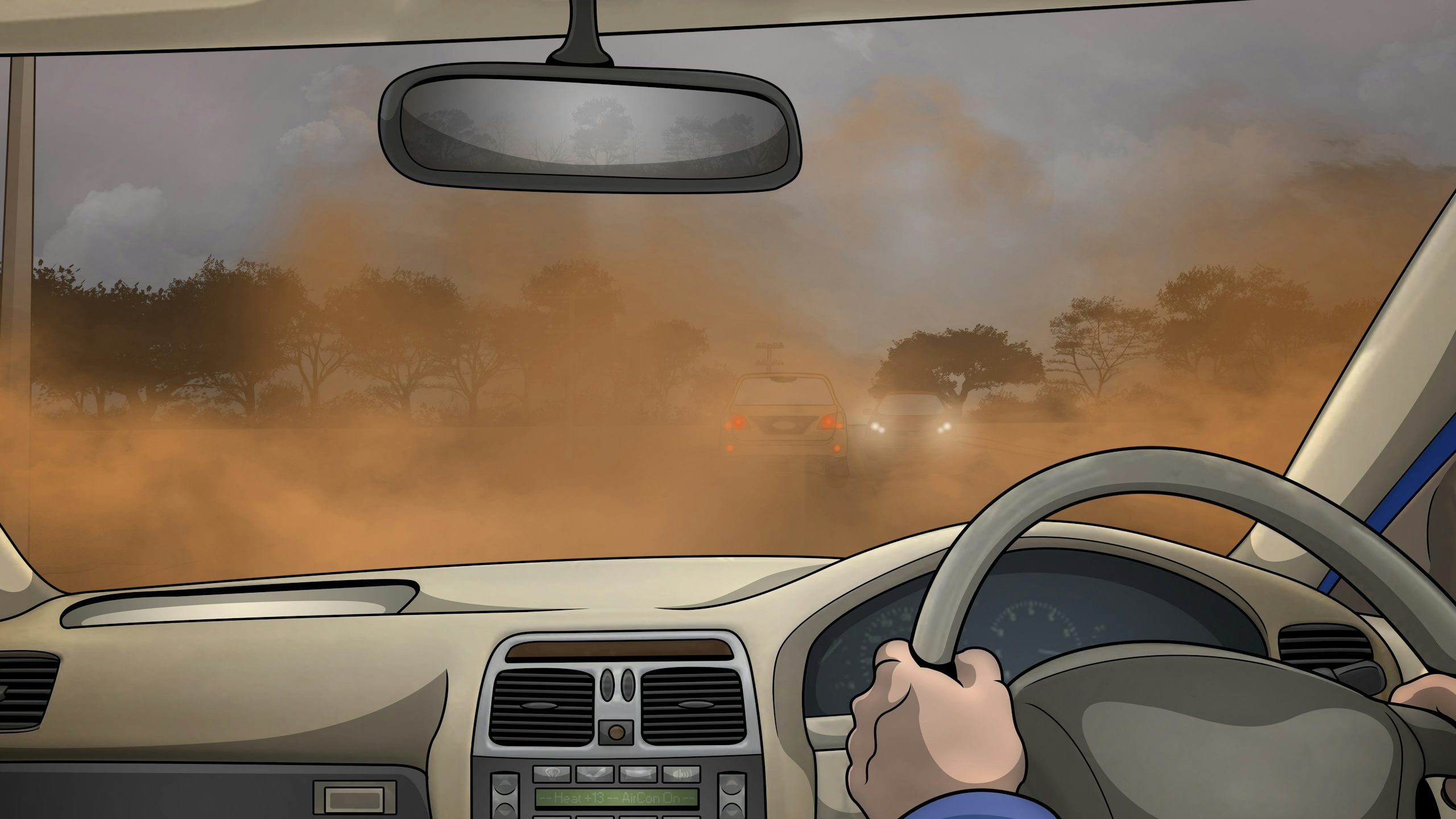
Always adjust your driving and speed to the conditions of the road you are driving on. Controlling the vehicle is more challenging on these roads, and the braking distance will be much longer. It’s especially important to enter curves/bends at safe speeds on these roads.
Slippery roads
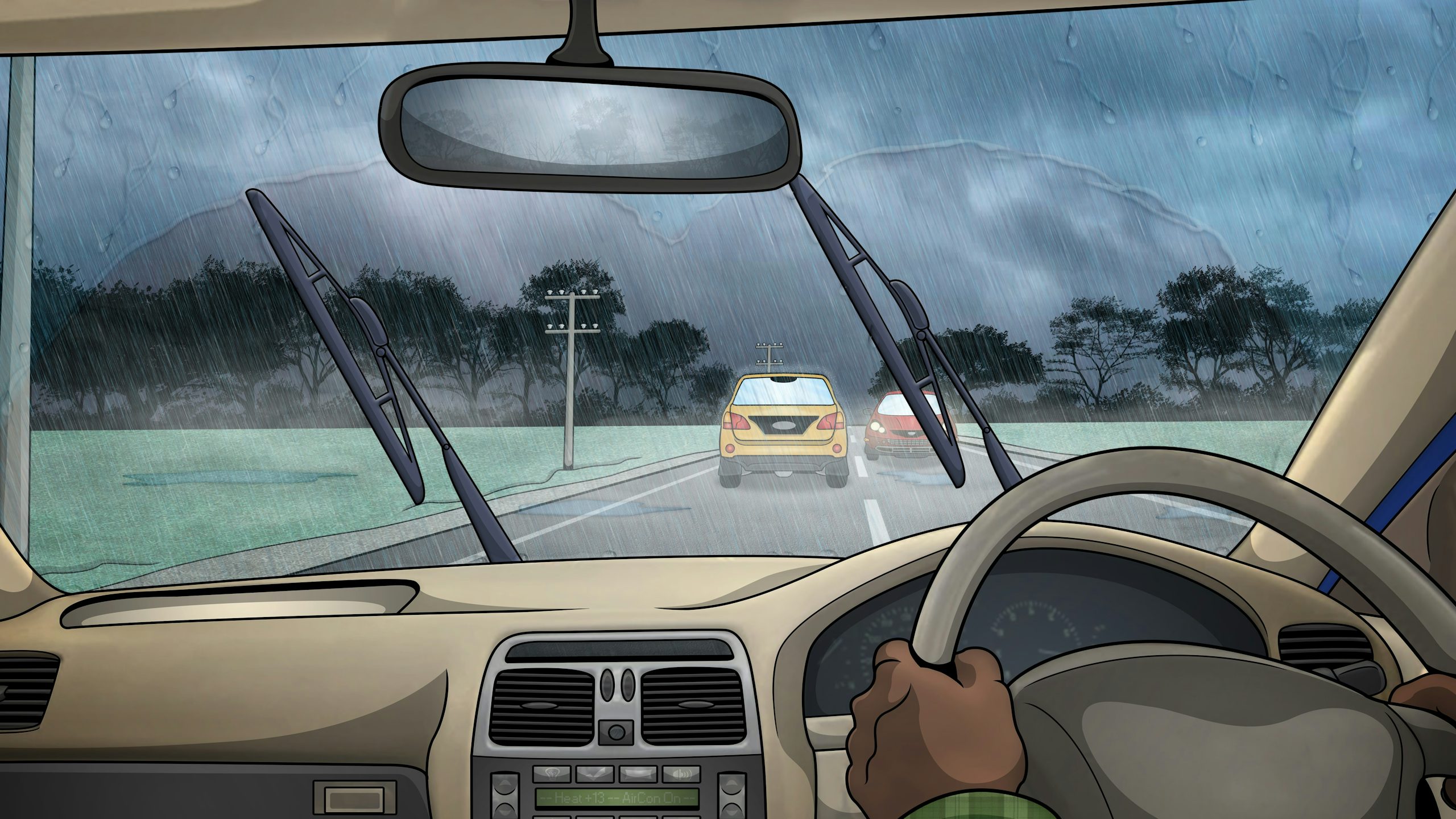
Mud, rain, frost and ice cause slippery roads. When wet or corrugated, an unsealed road can become very slippery with even greater stopping distances and further reduced road holding.
Be extra careful just as it starts to rain. Initially, rain will make any road slippery due to the oil and dirt that is washed to the surface. The oil and dirt can cause skidding until further rain washes it away. Slow down and keep a safe distance to any vehicle ahead of you.
Narrow roads
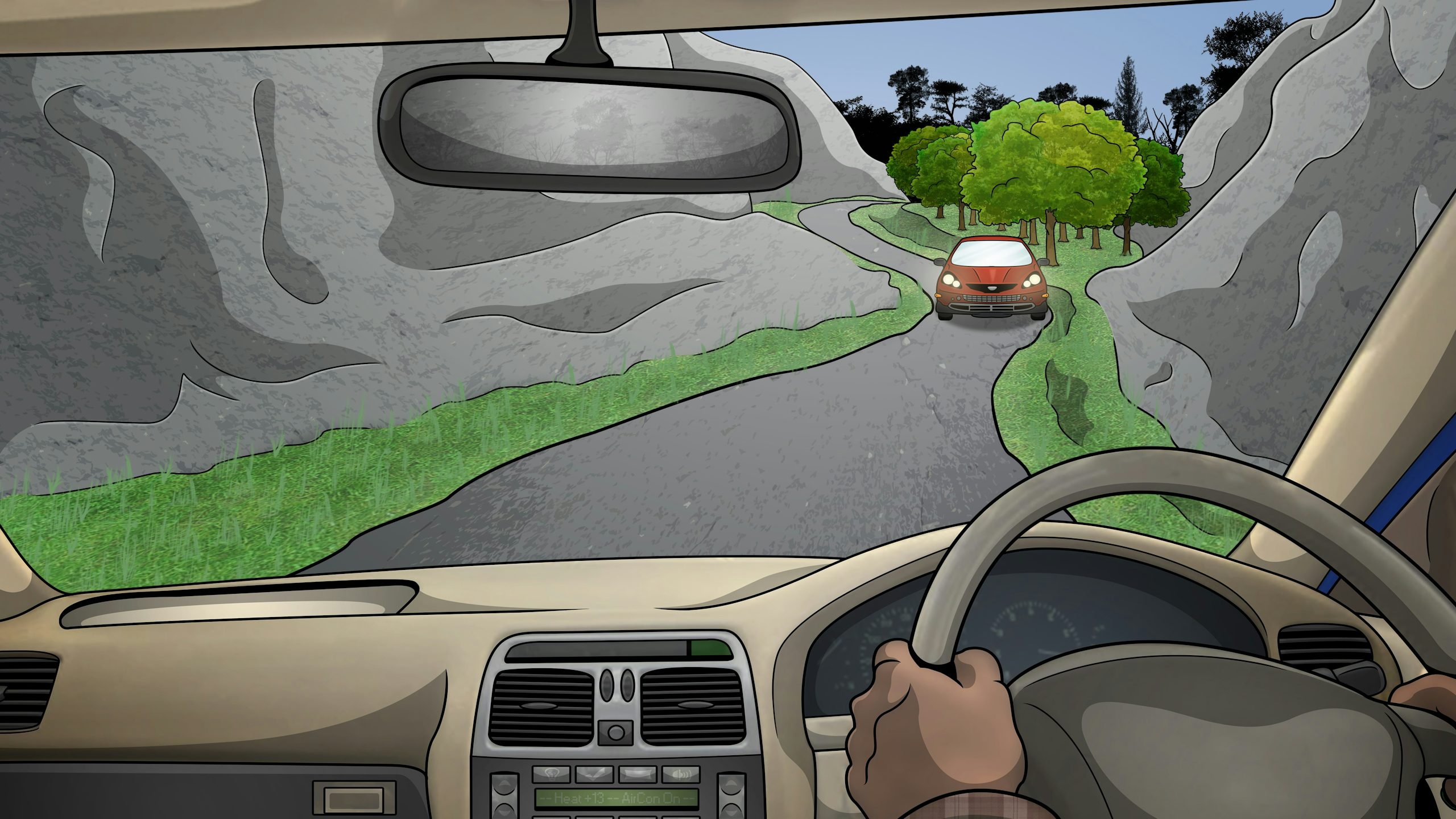
Drive cooperatively and allow approaching vehicles to pass if the road is not wide enough to fit two vehicles. Don’t stop near narrow road sections.
Many crashes when driving in the country occur because of running off the bitumen with 1 or 2 wheels and as a result over-correcting or braking too hard. It is recommended that you take your foot off the accelerator, not brake too hard, hold the steering wheel firmly with both hands and then ease the wheels back onto the road. Be careful as the wheel can be pulled out of your hand if you hit a rock.
If you have to move a wheel off the bitumen (e.g. when passing on a narrow road), you should slow down gently in advance and carefully steer back onto the bitumen when it is safe to do so.
Near slow-moving traffic
Vehicles with flashing amber beacons warn of a slow-moving or stationary vehicle (such as a traffic officer vehicle, salt spreader, snow plough or recovery vehicle) or abnormal loads, so approach with caution.
Near animals and stock

Animals are unpredictable and can rush onto the road. They can also be hypnotised by headlights, resulting in them standing still on the road. If there is a possibility of unfenced stock or wildlife, slow down and look out for movement near the road. Some animals are more active at dusk and dawn.
It can be very dangerous to swerve violently in order to avoid hitting an animal on the road as it can lead to a head-on collision with oncoming traffic or loss of control of the vehicle.
When near animals:
- If you can safely stop or slow down, you should do so.
- If you are unable to avoid the animal safely, you may have to hit it to avoid creating a more dangerous situation for yourself and others (e.g. a head-on collision or loss of control).
